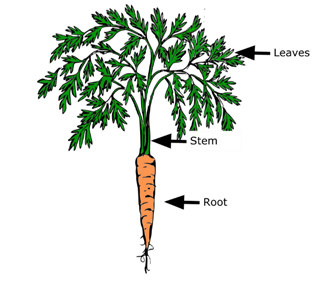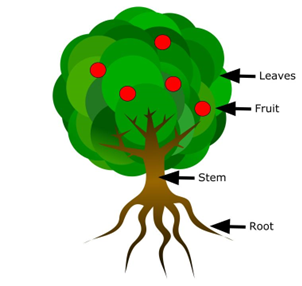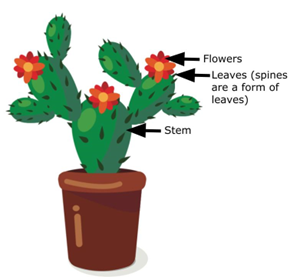
Knowledge and Skills Statement
The following is an example of how to assess proficiency of this student expectation (SE) or a portion of the SE.
Have students observe a flowering plant for five minutes outdoors. Students may draw the plant or collect the entire plant (including the roots) and tape it into their notebooks. Students should label the parts of the plant, including the roots, stem, leaves, flowers, and (if present), the fruit. Students should be exposed to multiple types of plants so they can observe and identify parts of plants in different forms. For example, they should be able to recognize that cacti, pine trees, and tomato plants all have leaves, but they look different.
The further explanation is designed to be a resource for educators that helps them better understand the topic their students are learning. Further explanations may be written at a more complex level than would be expected for students at the grade level.
Each of the plants shown below have slightly different forms of roots, stems, leaves, and fruits.
Public Domain - TEA added labels
| Carrot | Tree | Cactus |
Research
Ashbrook, Peggy. 2016. “The Early Years: Discovering Through Deconstruction.” Science and Children: From Molecules to Organisms 53, no. 9 (Summer 2016): 22-23. http://www.jstor.org/stable/24721771. Accessed November 17, 2022.
Summary: The students in this aticle practice deconstructing objects. This process helps young students to understand how they work and the functions of their parts. Students can start exploring plants in their area and examine their different parts and how they use them. Teachers can connect to how the human body uses its parts to function, similar to plant parts (humans using arms to climb a ladder). As students use their senses to explore and describe the plants, teachers should ask students what they think each part might do. Students can draw and explain their findings.
Research
McGough, Julie, and Lisa Nyberg. 2013. “Strong Stems Need Strong Sprouts!” Science and Children 50, no. 5 (January 13): 27–33. http://www.jstor.org/stable/43176338. Accessed 29 Nov. 2022.
Summary: Observing plants and plant parts gives students a better understanding of many science concepts. Students can observe the outside and the inside of different plants and draw and label the parts they see. To show students what can happen to plants if they do not obtain their basic needs, the class can observe several plants with different needs removed. These observations should be recorded and discussed. Students should be encouraged to ask about plants and can create models with classroom and household items to represent plants and their parts and how they help them meet their needs.



